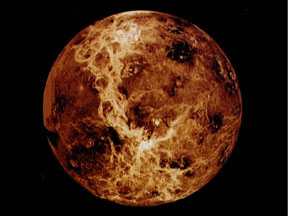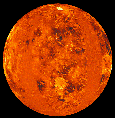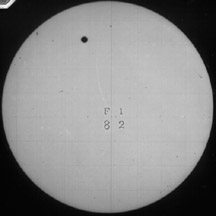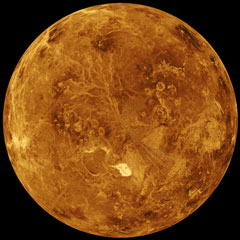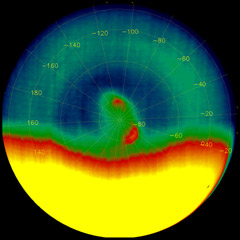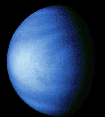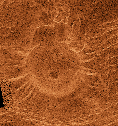Click on image for full size
Courtesy of NASA
Related links:
Discover Venus
Venus is one of the brightest objects in the sky, so it is clearly visible to the naked eye. It can be tricky to spot, however, because it is always near the Sun. Because of this, it rises and sets with the Sun each day. Ancient civilizations believed they were actually two different objects, so they called the one which rose the Morning Star, and the one which sets the Evening Star. Of course, we now know it's the same object!
No one knows who really discovered Venus, since it is so obvious in the sky. However, much has been discovered about Venus in the past century. In the 1950's astronomer Robert Richardson noticed that Venus rotates "backwards". In other words, on Venus the Sun rises in the west and sets in the east. Eventually, radar was used to prove his theory. At the same time, scientists found that Venus rotates very slowly, with a period of 243 days.
Mercury has only been visited by one spacecraft, but Venus was much luckier. The United States and the Soviet Union were competing to send probes to Venus. Almost everything we know about the planet came as a result of this race. We now know that Venus has a very dense atmosphere that consists mostly of sulfuric acid and carbon dioxide. The surface of Venus is very hot, reaching temperatures of 900 ° F.
Even today we are continually exploring our neighbor planet. In 1990, the Magellan spacecraft began mapping the surface of Venus. The spacecraft revealed volcanos, craters and the absence of water.


